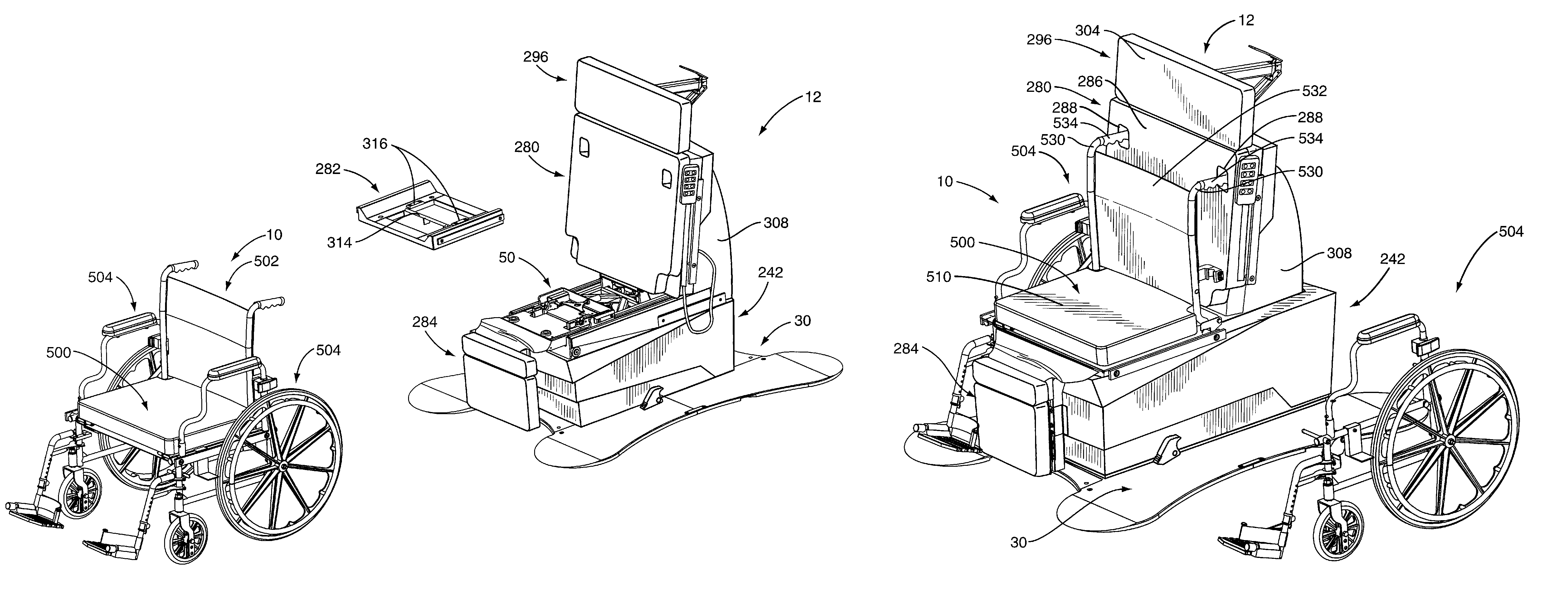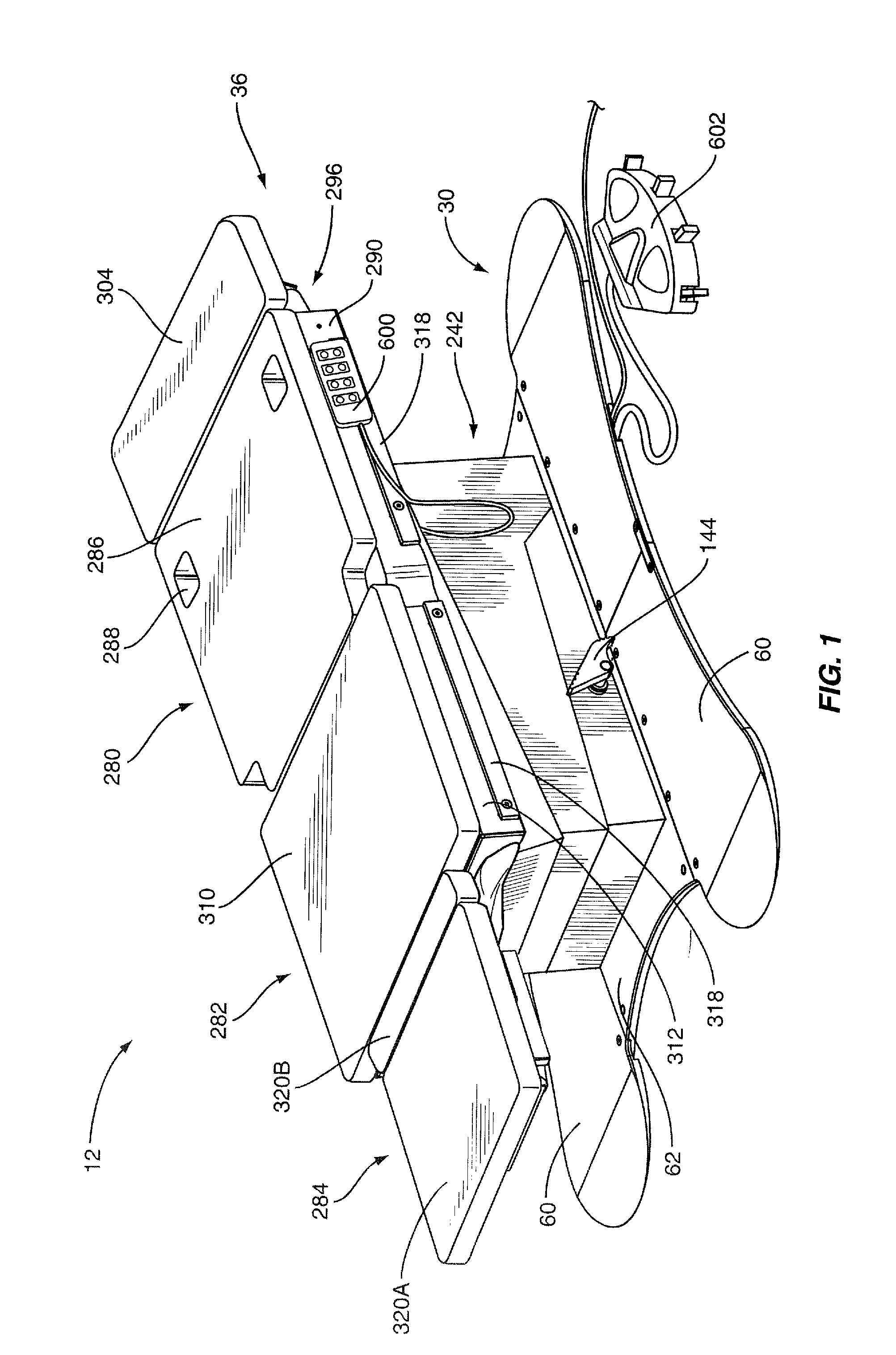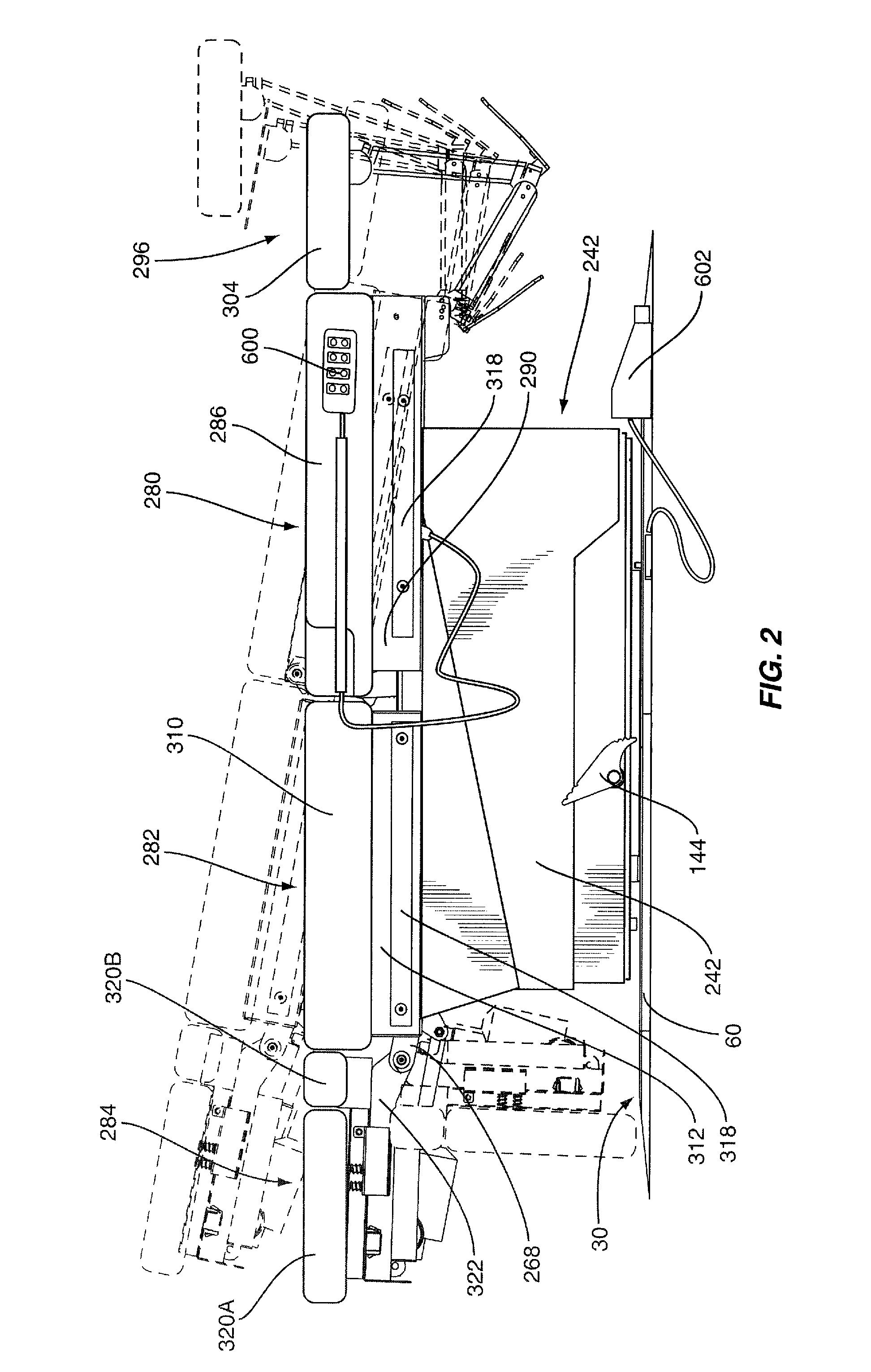Examination table
a technology for examination tables and wheelchairs, applied in the direction of tables, wheelchair/patient conveyance, transportation and packaging, etc., can solve the problems of confined wheelchairs, real problems, potential injuring patients, etc., and achieve the effect of raising and lowering the wheelchair
- Summary
- Abstract
- Description
- Claims
- Application Information
AI Technical Summary
Benefits of technology
Problems solved by technology
Method used
Image
Examples
Embodiment Construction
[0054]With further reference to the drawings, the patient examination system of the present invention is shown therein and basically comprises a wheelchair indicated generally by the numeral 10 (FIGS. 24-25) and an examination table indicated generally by the numeral 12 (FIG. 1).
[0055]Briefly reviewing wheelchair 10 and examination table 12, the wheelchair includes a central section comprised of a seat indicated generally by the numeral 500 and a back indicated generally by the numeral 502. Back 502 may pivot with respect to the seat 500 thereby giving rise to a convertible wheelchair. Removably mounted to the seat 500 and back 502 is a side frame indicated generally by the numeral 504. As will be appreciated from subsequent portions of this disclosure, the side frames 504 can be quickly and easily removed from the central section of the wheelchair 10 to facilitate the examination of a patient while the wheelchair is supported on the examination table 12.
Examination Table
[0056]Turni...
PUM
 Login to View More
Login to View More Abstract
Description
Claims
Application Information
 Login to View More
Login to View More - R&D
- Intellectual Property
- Life Sciences
- Materials
- Tech Scout
- Unparalleled Data Quality
- Higher Quality Content
- 60% Fewer Hallucinations
Browse by: Latest US Patents, China's latest patents, Technical Efficacy Thesaurus, Application Domain, Technology Topic, Popular Technical Reports.
© 2025 PatSnap. All rights reserved.Legal|Privacy policy|Modern Slavery Act Transparency Statement|Sitemap|About US| Contact US: help@patsnap.com



